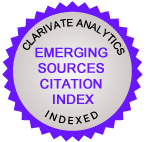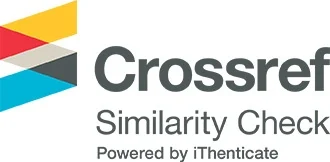Politicians in Chilean television: to be or not to be in morning shows
-
Maria Magdalena Walker
 mawalker@uc.cl
mawalker@uc.cl
Downloads
DOI:
https://doi.org/10.56754/0718-4867.2024.3501Abstract
Politicians currently participate in entertainment programs to approach their voters in a festive manner. In this deployment they resort to personalization, that is, the tendency to highlight personal, biographical and private aspects over ideological or partisan issues. In order to describe this television appearance in Chilean morning shows in the electoral context (2020-2021), a mixed exploratory study was carried out, with content analysis of segments shown on TV and 16 focus groups with regular audiences of these programs. The results show that there are differences according to the type of elections held: the first and the second presidential round lead the private references to politicians, while the election of governors is the one that gathers the least individual reviews. Indeed, the public appreciates the incorporation of political issues and topics in these broadcasts, but they are cautious about the exposure of intimate aspects of politicians. Transparency and honesty in management are more valued than the private life of the public official.
Palabras Clave
Anderson, C. (2016). Ecosistemas de noticias. En Anderson, C., Witschge, T., Domingo, D., & Hermida, A. (Eds.), The Sage Handbook of digital journalism (pp. 410-423). Sage.
Baum, M. A. (2003). Soft News and Political Knowledge: Evidence of Absence or Absence of Evidence? Political Communication, 20, 173-190. http://dx.doi.org/10.1080/10 58460 - 0390211181
Berganza, R., & Ortiz-González, A. (2023). La personalización como estrategia editorial en la cobertura de escándalos políticos: el caso de la monarquía española. Estudios sobre el Mensaje Periodístico, 29(3), 533-542. https://doi.org/10.5209/esmp.87185
Berrocal, S., Abad, L., Cebrian, E., & Pedreira, E. (2003): El 'infoentretenimiento' televisivo. Las elecciones legislativas de 2000 en El Informal, Caiga Quien Caiga y Las Noticias del Guiñol. En Comunicación política en televisión y nuevos medios (pp. 281-308). Ariel España.
Berrocal, S., Campos-Domínguez, E., & Redondo-García, M. (2014). Media prosumers in political communication: Politainment on YouTube. Comunicar, 43, 65-72. https://doi.org/10.3916/C43-2014-06
Bertolotti, M., Catellani, P., Douglas, K. M., & Sutton, R. M. (2013). Los "dos grandes" en la comunicación política: los efectos de atacar y defender el liderazgo o la moralidad de los políticos. Psicología social, 44(2), 117–128. https://doi.org/10.1027/1864-9335/a000141
Blondel, J. (1987). Political leadership. Sage.
Blumler, J. G., & Kavanagh, D. (1999). The Third Age of Political Communication: Influences and Features. Political Communication, 16(3), 209-230. http://dx.doi.org/10.1080/105846099198596
Canel, M. J. (2006). Comunicación Política: una guía para su estudio y práctica (2a Edición). Editorial Tecnos.
Chadwick, A., Dennis, J., & Smith, A. P. (2016). Política en la era de los medios híbridos: poder, sistemas y lógicas de los medios. En Bruns, A., Enli, G., Skogerbo. E., Larsson, A., & Christensen, C. (Eds.), The Routledge companion to social media and politics (pp.7-22). Routledge.
Cramer-Brownell, K. (2014). Showbiz Politics: Hollywood in American Political Life. UNC Press Books.
Crutzen, B. S., & Flamand, S. (2023). Leaders, factions, and the determinants of electoral success. European Journal of Political Economy. 1-21. https://doi.org/10.1016/j.ejpoleco.2023.102450
Curran, J., Coen, S., Soroka, S., Aalberg, T., Hayashi, K., Hichy, Z., & Tiffen, R. (2014). Reconsidering ‘virtuous circle’ and ‘media malaise’ theories of the media: An 11-nation study. Journalism, 15(7), 815–833. https://doi.org/10.1177/1464884913520198
Dahl, R. (1989). La democracia y sus críticos. Yale University Press.
Dalton, R. J. (1996). Political cleavages, issues, and electoral change. En LeDuc, L., Niemi, R. G., & Norris, P. (Eds.), Comparing Democracies: Elections and voting in global perspective (pp. 319-342). Sage.
Delli-Carpini, M., Lomas-Cook, F., & Jacobs, L. (2004). Public Deliberation, Discursive participation, and citizen engagement: A review of the empirical literature. Annual Review of Political Science, 7(1), 315-344. https://doi.org/10.1146/annurev.polisci.7.121003.091630
De-Vreese, C. H. (2007). Spiral of Euroscepticism: ¿The Media’s Fault? Acta Politica, 42, (2-3), 271–286 https://doi.org/10.1057/palgrave.ap.5500186
Echeverría, M. (2017). Personalización política e infoentretenimiento periodístico. Un estudio desde los encuadres. Cuadernos.info, (41), 71-87. http://dx.doi.org/10.7764/cdi.41.1099
Egea-Barquero, M., & Zamora-Medina, R. (2023). La personalización política como estrategia digital: análisis de los marcos visuales que definen el liderazgo político de Isabel Díaz Ayuso en Instagram. Estudios sobre el Mensaje Periodístico, 29(3), 567-579. https://dx.doi.org/10.5209/esmp.84824
Escobar, J. & Bonilla-Jiménez, F. (2017.). Grupos focales: una guía conceptual y metodológica. Cuadernos hispanoamericanos de psicología, 9(1), 51-67. http://www.tutoria.unam.mx/sitetutoria/ayuda/gfocal-03122015.pdf
Esser, F., & Pfetsch, B. (2020). Comparing Political Communication: A 2020 Update. Political Communication. En Caramani, D. (Ed.), Comparative Politics (Fifth Edition, pp. 336-358). Oxford University Press.
Farkas, X., & Bene, M. (2021). Images, Politicians, and Social Media: Patterns and Effects of Politicians’ Image-Based Political Communication Strategies on Social Media. The International Journal of Press/Politics, 26(1), 119–142. https://doi.org/10.1177/1940161220959553
Habermas, J. (1994). Historia y crítica de la opinión pública. Gustavo Gili.
Hollander, B. A. (2005). Late-night Learning: Do Entertainment Programs Increase Political Campaign Knowledge for Young Viewers? Journal of Broadcasting and Electronic Media, 49, 402-415. DOI: 10.1207/s15506878jobem4904_3
Holtz-Bacha, C., Langer, A. I., & Merkle, S. (2014). La personalización de la política en perspectiva comparada: cobertura de campañas en Alemania y el Reino Unido. European Journal of Communication, 29(2), 153–170. https://doi.org/10.1177/0267323113516727
Joathan, Í., & Lilleker, D. G. (2023). Permanent campaigning: A meta-analysis and framework for measurement. Journal of Political Marketing, 22(1), 67-85. https://doi.org/10.1080/15377857.2020.1832015
Kaid, L. (2014). Comunicación política: un enfoque integrado de la teoría e investigación de la comunicación (pp. 471-486). Routledge.
Kepplinger, H. (2002). Mediatización de la política: teoría y datos. Journal of Communication, 52(4), 972–986. https://doi-org.pucdechile.idm.oclc.org/10.1111/j. 1460-2466.2002.tb02584.x
Klippendorf, K. (2019). Content Analysis, An Introduction to its methodology (4th Edition). Sage Publications.
Kruikemeier, S., Van-Noort, G. & Vliegenthart, R. (2013). Getting closer: the effects of personalized and interactive online political communication. Revista Europea de Comunicación, 28(1), 53–66. https://doi.org/10.1177/0267323112464837
Larsson, A. O. (2019). Skiing all the way to the polls: Exploring the popularity of personalized posts on political Instagram accounts. Convergence, 25(5-6), 1096-1110. https://doi.org/10.1177/1354856517741132
López-Rabadán, P. & Doménech-Fabregat, H. (2021). Nuevas funciones de Instagram en el avance de la “política espectáculo”. Claves profesionales y estrategia visual de Vox en su despegue electoral. Profesional de la información, 30(2), 1-18. https://doi.org/10.3145/epi.2021.mar.20
Maier, M., & Adam, S. (2010). Personalization of politics: A critical review and agenda for future research. Annals of the International Communication Association, Communication Yearbook, 34(1), 212-257. https://doi.org/10.1080/23808985.2010.11679101
Mazzoleni, G. (1991). Surgimiento del candidato y marketing político: Televisión y campañas electorales en Italia en la década de 1980. Comunicación política, 8(3), 201-212. https://www.doi.org/10.1080/10584609.1991.9962919
McAllister, I. (2015). The personalization of politics in Australia. Party Politics, 21(3), 337–345. https://doi.org/10.1177/1354068813487111.
Metz, M., Kruikemeier, S., & Lecheler, S. (2020). Personalization of Politics on Facebook: Examining the Content and Effects of Professional, Emotional and Private Self-Personalization. Information, Communication & Society, 23(10), 1481–1498. DOI: 10.1080/1369118X.2019.1581244
Moy, P., Xenos, M. A., & Hess, V. K. (2005). Communication and citizenship: Mapping the political effects of infotainment. Mass Communication & Society, 8(2), 111-131. https://doi.org/10.1207/s15327825mcs0802_3
____ (2006). Priming Effects of Late-Night Comedy. International Journal of Public Opinion Research, 18(2), 198–210. https://doi.org/10.1093/ijpor/edh092
Mujica, C., & Bachmann, I. (2018). The Impact of Melodramatic News Coverage on Information Recall and Comprehension. Journalism Studies, 19(3), 334-352. https://doi.org/10.1080/1461670X.2016.1190661
Norris, P. (2000). A virtuous circle: Political communications in postindustrial societies. Cambridge University Press.
Owen, D. (2018). El papel de los nuevos medios en la política. En Al-Rodhan, N., Andrews, J., Centeno, M. A., Conconi, A., Gamble, A., González, F., Hester, H., Kallinikos, J., Lajous, A., Mansell, R. E., Morozov, E., Müller, J-W., Nelson, D. R., Owen, D., Pardo, J. L., Qureshi, Z., Saunders, A., Springer, S., Srnicek, N., Storey, I., Viollaz, M., White, R. J., & Zalewski, M., La Era de la Perplejidad. Repensar el mundo que conocíamos (113-131). BBVA OpenMind.
Page, B., & Tannenbaum, J. (1996). Populistic Deliberation and Talk Radio. Journal of Communication, 46(2), 33-54. https://doi.org/10.1111/j.1460-2466.1996.tb01473.x
Pedersen, H. H., & Rahat, G. (2021). Political personalization and personalized politics within and beyond the behavioural arena. Party Politics, 27(2), 211-219. https://doi.org/10.1177/1354068819855712
Pfau, M., Houston, J. B., & Semmler, S. M. (2005). Presidential Election Campaigns and American Democracy: The Relationship Between Communication Use and Normative Outcomes. American Behavioral Scientist, 49(1), 48–62. https://doi.org/10.1177/0002764205279429
Pierola, G. (19 de julio, 2019). Matinales: el codiciado espacio donde los políticos quieren estar. PAUTA. www.pauta.cl
Popkin, S. L. (1991). The Reasoning Voter. Communication and Persuasion in Presidential Campaigns. The University of Chicago Press.
Porath, W., Suzuki, J., Ramdohr, T., & Portales, J. (2015). Cobertura periodística de tres campañas presidenciales en Chile: personalización y estrategias políticas. Boletín de Investigación Latinoamericana, 34(4), 451-466. https://doi-org.pucdechile.idm.oclc.org/10.111/blar.12366
Rahat, G., & Sheafer, T. (2007). The personalization (s) of politics: Israel, 1949–2003. Political communication, 24(1), 65-80. https://doi.org/10.1080/10584600601128739
Rebolledo, M. (2017). La personalización de la política: una propuesta de definición para su estudio sistemático. Revista de comunicación, 16(2), 147-176. https://revistadecomunicacion.com/article/view/991
Redondo-García, M. M., Ventura-Meneu, M., & Berrocal-Gonzalo, S. (2020). Nuevos roles del líder político en programas televisivos de infoentretenimiento. Doxa Comunicación. Revista interdisciplinar de estudios de comunicación y ciencias sociales, (30), 37-53. DOI: 10.31921/doxacom.n30a2
Strömbäck, J., & Esser, F. (2017). Political Public Relations and Mediatization: The Strategies of News Management. In Van-Aelst, P., & Walgrave, S. (Eds.), How Political Actors Use the Media. Palgrave Macmillan.
Ugalde-Binda, N., & Balbastre-Benavent, F. (2013). Investigación cuantitativa e investigación cualitativa: buscando las ventajas de las diferentes metodologías de investigación. Revista De Ciencias Económicas, 31(2), 179–187. https://doi.org/10.15517/rce.v31i2.12730
Van-Aelst, P., Sheafer, T., & Stanyer, J. (2011). The personalization of mediated political communication: A review of concepts, operationalizations and key findings. Journalism, 13(2), 203–220. https://doi.org/10.1177/1464884911427802
Verba, S., Nie, N. H., & Kim, J. (1978). Participation and political equality: a seven-nation comparison. University of Chicago Press.
Wauters, B., Thijssen, P., Van-Aelst, P., & Pilet, J. B. (2018). Centralized personalization at the expense of decentralized personalization. The decline of preferential voting in Belgium (2003–2014). Party politics, 24(5), 511-523. https://doi.org/10.1177/1354068816678882
Wells, C., Cramer, K. J., Wagner, M. W., Alvarez, G., Friedland, L. A., Shah, D. V., Bode, L., Edgerly, S., Gabay, I., & Franklin, C. (2017). When We Stop Talking Politics: The Maintenance and Closing of Conversation in Contentious Times. Journal of Communication, 67(1), 131–157. https://doi.org/10.1111/jcom.12280
Wiard, V. (2019). News ecology and news ecosystems. Oxford Research Encyclopedia of Communication, 1(1), 1-19. DOI: 10.1093/acrefore/9780190228613.013.847
Downloads
Published
How to Cite
Issue
Section
License
Copyright (c) 2024 Maria Magdalena Walker

This work is licensed under a Creative Commons Attribution 4.0 International License.
- Proposed policy to offer Open Access Journals
Authors who publish with this journal agree to the following terms:
a) Authors retain copyright and grant the journal right of first publication with the work simultaneously licensed under a Creative Commons Attribution Attribution (CC -BY 4.0) ![]() that allows others to share the work with an acknowledgement of the work's authorship and initial publication in this journal.
that allows others to share the work with an acknowledgement of the work's authorship and initial publication in this journal.
b) Authors are able to adopt licensing agreements for the non-exclusive distribution of the journal's published version of the work (for example, to post it to an institutional repositories or publish it in a monograph), with an acknowledgement of its initial publication in this journal.
c) Authors are allowed and encouraged to post their work online (For example, in institutional repositories or on their website) prior to and during the submission process, as it can lead to productive exchanges and increase the citation of published work (See The Effect of Open Access).












